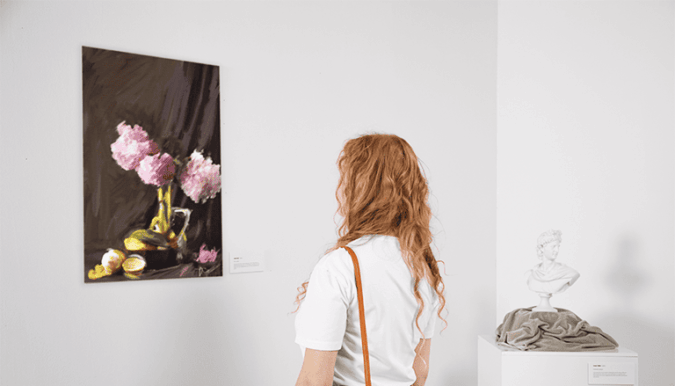Minimalist design centers on clarity, purpose, and intentional restraint.
Luxury consumers continue to gravitate toward a style that removes excess and highlights essence.
A sense of sophistication emerges when brands communicate confidence through simplicity.
High-end audiences respond strongly to emotional impact, quiet exclusivity, and elevated perceptions of quality.
The Philosophy of Minimalism in Luxury
Intentional restraint shapes modern luxury design by focusing on decisions instead of emptiness.
Every detail exists for a reason, which creates a sense of confidence that does not need loud expression to feel important.
Quiet luxury has emerged as a signature of high-end culture, and brands such as Aman Resorts and Celine rely on disciplined understatement to signal refinement, comfort and discretion.
A wider cultural shift encourages subtle expression. Modern shoppers appreciate mindfulness, ease and thoughtful consumption.
Sustainability influences these preferences as individuals reconsider excess and choose items that carry meaning rather than volume.
Minimalism reflects this movement by highlighting clarity and refinement without unnecessary flourish.
A clearer view of this philosophy appears when examining key principles that guide restrained luxury. Several principles illustrate how minimalism forms a modern premium identity.
These principles include the following points:
- Purpose over decoration where each design choice reflects intention rather than ornamentatio
- Selective detail that highlights craftsmanship by minimizing distraction
- Calm expression instead of visual noise that competes for attention
A balanced design philosophy emerges when brands embrace fewer distractions and more purpose.
Luxury shifts toward a state of selectiveness rather than extravagance, allowing consumers to appreciate depth in small, thoughtful expressions.
Visual Principles That Signal Premium Taste
Negative space elevates brand presentations by guiding attention toward what matters.
An experience similar to viewing art in a gallery appears, where each element has room to breathe. Spacious layouts communicate confidence by avoiding clutter and creating calm focus.
Muted color palettes strengthen this effect. Gray, beige and soft earth-inspired tones create an atmosphere of timeless sophistication.
These hues maintain a steady visual identity that does not rely on intensity or aggressive contrast.
Typography enhances minimalist communication through intentional choices.
Clean sans-serif fonts express clarity and modern thinking, while elegant serif fonts project a sense of heritage and thoughtful craftsmanship.
Every typographic decision becomes a subtle expression of personality.
Packaging and product design reinforce this philosophy. Labels without visual noise, containers with smooth silhouettes and refined materials create a sense of elevated value, exemplified by products like a guld klocka dam, where elegance and clarity come together in a timeless form.
Brands like La Mer and Apple show how simplicity communicates precision, confidence and excellence.
A clearer breakdown of the most influential visual cues helps illustrate why these principles resonate so strongly. Important cues include the following:
- Spacious layouts that reduce stress and highlight core elements
- Calm palettes that project steadiness and refinement
- Purposeful typography that supports brand values
- Sculpted forms that communicate precision without excess
Psychological Drivers Behind Minimalist Premium Appeal

Signaling theory explains why subtle branding resonates with high-end audiences.
Individuals who prefer discreet luxury use quiet cues to communicate status in a more thoughtful way.
Minimalist design becomes a refined language recognized by those who value subtle sophistication.
Cognitive relief plays an enormous role in modern preference patterns. Daily life creates constant digital stimulation and sensory clutter.
Minimalist environments offer a visual reset by removing distractions and allowing the mind to rest. Calm design improves focus and heightens perception of quality.
Emotional resonance increases when fewer elements compete for attention.
Consumers connect more easily with brands that communicate clearly and calmly.
Personal meaning grows stronger when intention guides attention rather than disorder.
A minimalist presentation fosters trust because nothing feels exaggerated or artificially emphasized. Purity of message becomes a strong emotional anchor that reassures customers.
A helpful summary of the main psychological forces can clarify why minimalist luxury feels so powerful. Those forces include the following:
- Status signaling through quiet cues
- Mental clarity supported by visual simplicity
- Emotional connection enhanced by focused messaging
- Trust built through disciplined restraint
Minimalism as a Premium Digital Experience

UX design benefits greatly when minimalist principles guide structure. Clean layouts, intuitive pathways and organized information create an online experience that feels effortless.
Luxury clients expect digital environments that reflect confidence, precision and calm navigation.
Consistency across touchpoints reinforces credibility. Aesop offers an example of complete alignment between digital presence, packaging and retail design.
Each interaction follows the same quiet visual language, creating a unified sense of sophistication.
Storytelling thrives in minimalist design environments because clarity holds the spotlight.
Editorial imagery, controlled compositions and concise messages help brands communicate authenticity.
Simplicity directs attention toward meaning rather than unnecessary decoration. Modern customers respond favorably to clarity that feels intentional and honest.
A more structured overview highlights the digital components that sustain premium minimalist experiences. Those components include the following:
- Clear navigation that reduces cognitive load
- Consistent design cues across physical and digital spaces
- Thoughtful imagery that communicates authenticity
- Concise messages that deliver emotional clarity
Risks and Balancing Acts
Avoiding over-simplification remains essential for luxury brands.
Excessively stripped design risks appearing cold, generic or unfinished when intention does not guide decisions.
Purpose must remain at the center of minimalist expression to maintain sophistication.
Preserving brand DNA requires careful attention. A minimalist approach must still reflect personality, history and emotional tone.
Brands lose their identity when simplicity becomes emptiness. Tone, texture, narrative depth and cultural relevance must remain present even when visual details are reduced.
Emotional connection becomes increasingly important because fewer visual cues are available.
Minimalist environments demand stronger narrative choices and more thoughtful expression.
Successful luxury minimalism balances restraint with warmth, relatable stories and human authenticity.
A quick list of common risks provides clarity for brands exploring minimalist direction. Important risks include the following:
- Losing identity due to excessive reduction
- Creating sterile experiences lacking emotion
- Weakening storytelling due to over-editing
- Removing too many cues that support brand personality
Summary

Minimalism continues to define premium taste through confidence, craftsmanship and cultural alignment with current values.
Clarity, discretion and emotional resonance remain central to modern luxury.
High-end consumers respond to intentional simplicity because it reflects modern aspirations and a desire for meaning without excess.

